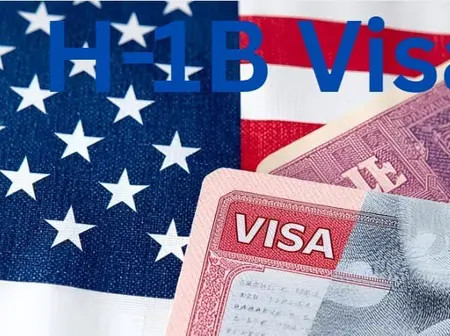September 26, 2025 — The United States’ H-1B visa program, a critical pathway for high-skilled foreign professionals, particularly in technology and engineering, continues to be dominated by Indian nationals. India leads in H-1B visa approvals as Indian applicants accounted for a staggering 71% of all H-1B visa approvals—totaling 283,397 approvals in Fiscal Year 2024.
China followed as a distant second with 46,680 approved applicants, making up just under 12% of the total. Other countries, including the Philippines, Canada, and South Korea, each contributed around 1% or less, highlighting the overwhelming lead of India and China in supplying talent to the U.S. workforce.
Together, India and China represented more than four-fifths of all H-1B approvals in FY 2024. This concentration underscores both nations’ large pools of STEM (science, technology, engineering, and mathematics) graduates and the deep-rooted connections their talent pipelines have with American tech giants, which is why India leads in H-1B numbers.
U.S.-based companies such as Google, Microsoft, Amazon, and Meta have long relied on Indian and Chinese professionals to fill crucial roles in software development, data engineering, and artificial intelligence. Consequently, India leads in H-1B acceptance due to these high demands.
The H-1B visa program has recently become a hot-button political issue following former President Donald Trump’s announcement of a proposed $100,000 supplemental fee for new H-1B applications. The announcement has sent shockwaves through the tech industry, where H-1B workers form a backbone of the talent pool.
While Trump’s proposal has not yet been enacted into law, its implications are significant. Many tech companies warn that such a fee could stifle innovation, increase outsourcing, or make the U.S. less attractive to global talent. The move has reignited debates about immigration policy, labor market protections, and the economic value of skilled foreign workers.
India’s dominance in the H-1B program is not new, but the scale in FY 2024 is striking. With nearly three-quarters of all approvals, Indian nationals remain the single largest group benefiting from the visa. This reflects not only the country’s vast and growing pool of tech graduates but also the strong presence of Indian IT firms and outsourcing giants like Infosys, TCS, and Wipro, many of which operate extensively in the U.S. Indeed, India leads in H-1B acquisition due to these ongoing trends.
Furthermore, Indian students often transition from U.S. universities into H-1B roles after completing their studies under programs like Optional Practical Training (OPT), creating a robust academic-to-employment pipeline that strengthens India’s representation in the skilled immigration landscape.
As immigration policy becomes a more prominent political issue ahead of the 2026 elections, the future of the H-1B visa—and the global talent flow it enables—remains uncertain. However, for now, India’s position as the leading source of high-skilled labor for the United States remains unchallenged. India leads in H-1B visa issuance, reinforcing its role as a central contributor to the tech industry.
With U.S. companies still facing a domestic talent shortage in critical STEM fields, the H-1B program continues to serve as a vital mechanism to fill that gap—though at the center of increasing political scrutiny and economic debate.

Leave a Reply